PPT-7 - Lecture notes 2 PDF

| Title | PPT-7 - Lecture notes 2 |
|---|---|
| Author | Jerin Joy |
| Course | Managerial Economics |
| Institution | Symbiosis International University |
| Pages | 12 |
| File Size | 85.4 KB |
| File Type | |
| Total Downloads | 435 |
| Total Views | 626 |
Summary
Stage I: stage of Increasing returnsReasons for the increasing returns stage In the first stage, the AP, MP and TP increase due to the following reasons:: 1. The fixed factor is indivisible and every increase in variable factor leads to better and better utilisation of the fixed factor. This incr...
Description
Stage I: stage of Increasing returns Reasons for the increasing returns stage
In the first stage, the AP, MP and TP increase due to the following reasons::
1. The fixed factor is indivisible and every increase in variable factor leads to better and better utilisation of the fixed factor. This increase in the efficiency of fixed factors causes increasing returns,
2. Due to an increase in employment of the variable factor, the efficiency of the variable factor also increases due to the possibility of division of labour and specialisation.
Stage ii : Stage of Diminishing returns reasons for diminishing returns:
1. During the first stage, till the optimum output is reached, the fixed factor is under utilised. AP increases as long as the fixed factor gets to the point of optimum utilisation. After this, any more increase in the variable factor will make the fixed factor inadequate in relation to the variable factor and the AP will fall.
2. The two factors are not substitutable. If the variable factor could substitute for the fixed factor, the fixed factor would not become inadequate because the variable factor would stand in for the scarce fixed factor.
Stage III: Stage of Negative returns Reasons for the negative returns
1. Due to continuous increase in the variable factor, we reach the point when units of variable factor become too much for the fixed factor to cope with. It becomes over utilised.
2. This increase in variable factor puts a strain on the fixed factor and it’s efficiency decreases. Moreover, the variable factor now has less and less room and space to work with the this results in the reduction in efficiency of variable factor also.
Revenue Revenue is nothing but sales receipts. It is not the same thing as profits. It is the amount of money you receive by selling the product. For example: If the cost of producing a product = Rs.100/- (total cost TC) It is sold at Rs.120/- ( total revenue TR) Profit is TR – TC = Rs.20/
We will study revenue in 2 different markets 1) A perfect market: A market where the producer is not allowed to change the price to sell 2) An imperfect market: A market where the producer is allowed to change the price to sell more
The concept of revenue : Total, Average and Marginal revenue
The term ‘revenue’ refers to the receipts of the firm from the sale of certain quantities of a commodity at various prices.
Total revenue (TR) : is calculated by multiplying the total output sold by the price at which the product is sold.
Total revenue = price x output sold
Total revenue (TR) is the total sale proceeds of a firm by selling a commodity at a given price.
Average revenue
Average
revenue (AR) is the revenue per unit of the commodity sold. It is found by dividing the total revenue by the number of units sold.
total revenue Average revenue (AR) : -------------------------------= price
Total sales/ output sold
Marginal revenue (MR)
Marginal revenue (MR) : is the addition to total revenue by sale of an additional unit of the product
Marginal revenue of last( n th) unit sold = total revenue from sale of n units – total revenue from sale of n – 1 unit
change in TR
Or, MR = --------------------------------------
Change in sales/output sold
Revenue curves in perfect competition
An individual firm has no control on price fixing. It has to sell the product at given price, determined by demand and supply. Hence, price will be equal to AR and MR.
Price
supply
TR
AR
MR
10
1
10
10
----
10
2
20
10
10 Price = AR = MR
10
3
30
10
10
10
4
40
10
10
10
5
50
10
10
Revenue curves in imperfect competition
Under imperfect competition, a firm can sell more by reducing price.
Units sold
TR
AR
MR
1
50
50
50
2
90
45
40
3
120
40
30
4
140
35
20
5
150
30
10
MR, MC and profit maximisation
To maximise profits, a producer will produce that level of output which gives him maximum profits. Such a level of profits is given by the equality of MR = MC. Profits will be highest at that level of output at which MR and MC are equal.
Total profit is the difference between TR and TC. Increasing profits will motivate the producer to produce and sell more. Profits will reach the maximum and start declining from the point where MR = MC
Profit maximisation condition Output
TR
AR
MR
TC
AC
MC
TP
1
50
50
50
20
20
20
30
2
90
45
40
30
15
10
60
3
120
40
30
42
14
12
78
4
140
35
20
62
15.5
20
78
5
150
30
10
100
20
38
50
Returns to scale, or production function with all variable inputs ( LR production fn) When
all factors of production are increased together to the same extent, the MP or returns increase at first, then stays constant and ultimately starts declining if the scale of production is increased still further.
This Just
is true of agriculture as well as industry.
as in case of law of variable proportions, we get all 3 phases through which returns pass....
Similar Free PDFs

Lecture notes, lecture 2
- 3 Pages

2 - Lecture notes 2
- 5 Pages

Lecture notes, lecture Chapter 2
- 11 Pages
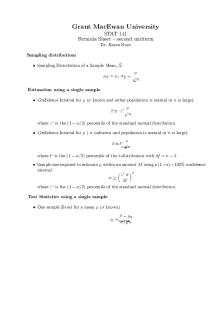
Lecture notes, lecture formula 2
- 1 Pages

2 Biodiversity - Lecture notes 2
- 33 Pages

Chapter 2 - Lecture notes 2
- 30 Pages
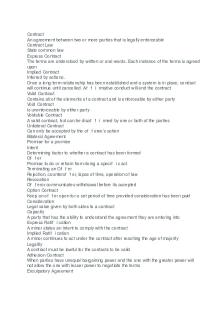
Blaw 2 - Lecture notes 2
- 4 Pages

Chapter 2 - Lecture notes 2
- 4 Pages
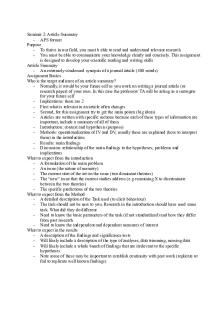
Seminar 2 - Lecture notes 2
- 2 Pages
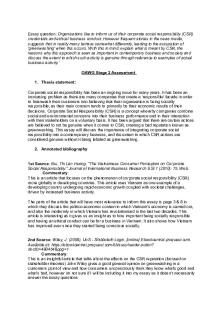
Stage 2 - Lecture notes 2
- 3 Pages
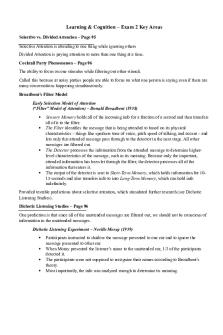
Exam 2 - Lecture notes 2
- 5 Pages

Lectia 2 - Lecture notes 2
- 3 Pages
Popular Institutions
- Tinajero National High School - Annex
- Politeknik Caltex Riau
- Yokohama City University
- SGT University
- University of Al-Qadisiyah
- Divine Word College of Vigan
- Techniek College Rotterdam
- Universidade de Santiago
- Universiti Teknologi MARA Cawangan Johor Kampus Pasir Gudang
- Poltekkes Kemenkes Yogyakarta
- Baguio City National High School
- Colegio san marcos
- preparatoria uno
- Centro de Bachillerato Tecnológico Industrial y de Servicios No. 107
- Dalian Maritime University
- Quang Trung Secondary School
- Colegio Tecnológico en Informática
- Corporación Regional de Educación Superior
- Grupo CEDVA
- Dar Al Uloom University
- Centro de Estudios Preuniversitarios de la Universidad Nacional de Ingeniería
- 上智大学
- Aakash International School, Nuna Majara
- San Felipe Neri Catholic School
- Kang Chiao International School - New Taipei City
- Misamis Occidental National High School
- Institución Educativa Escuela Normal Juan Ladrilleros
- Kolehiyo ng Pantukan
- Batanes State College
- Instituto Continental
- Sekolah Menengah Kejuruan Kesehatan Kaltara (Tarakan)
- Colegio de La Inmaculada Concepcion - Cebu



